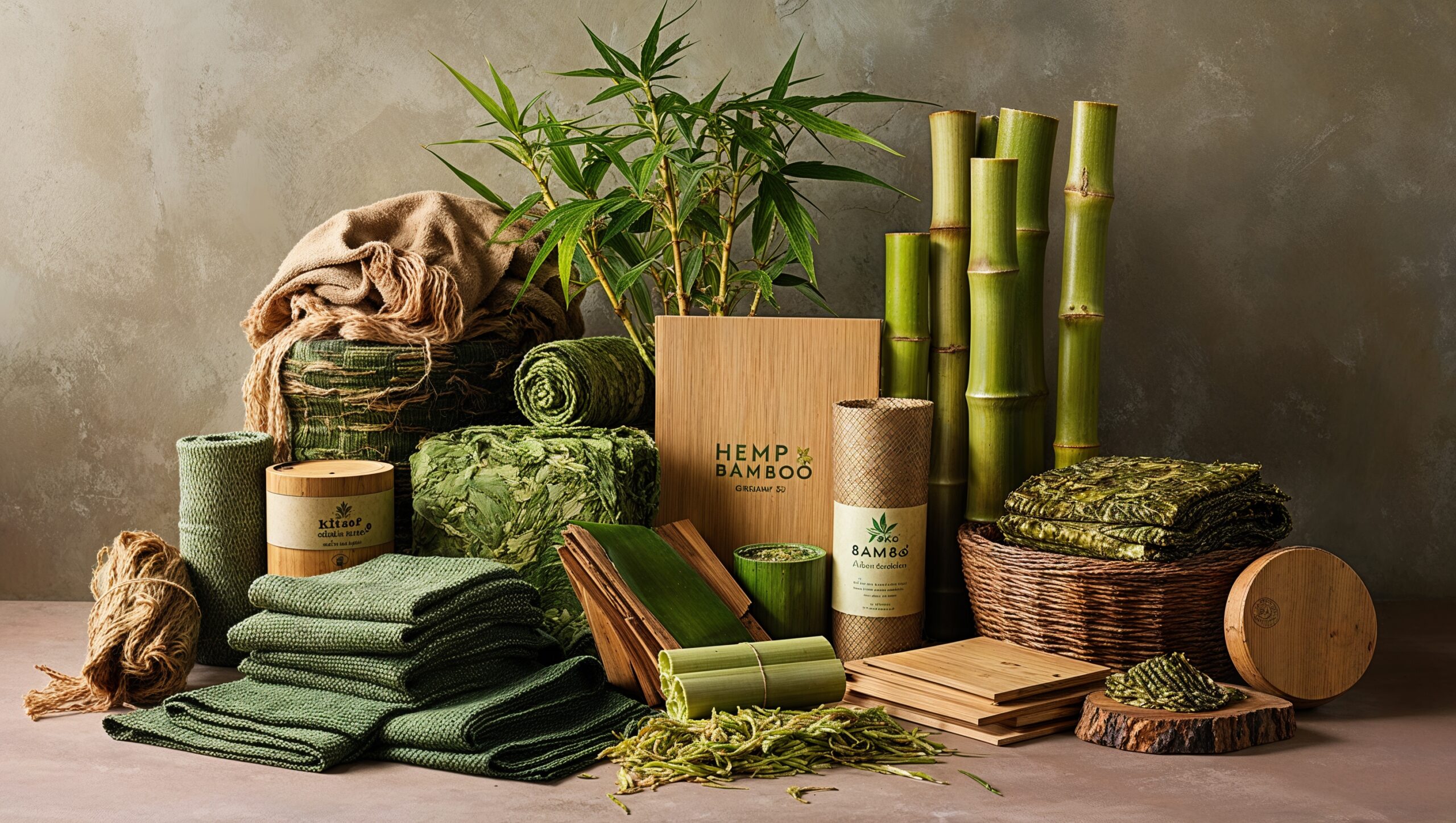Hemp and bamboo are two of the most versatile and sustainable materials on the planet. Both have been used for thousands of years, playing crucial roles in ancient civilizations and offering eco-friendly solutions to modern challenges. Yet, despite their historical importance, these crops have faced decades of suppression, largely due to industrialized interests. Now, both hemp and bamboo are reemerging as key players in the sustainable revolution, and their potential to shape the future of everything from construction to clean fuel is immense.
The Ancient History and Many Uses of Hemp and Bamboo
Both hemp and bamboo have deep historical roots, with evidence of their use stretching back thousands of years. Hemp is one of the oldest cultivated crops, prized for its strength, durability, and variety of uses. Ancient civilizations used hemp for textiles, rope, sails, and paper. The earliest evidence of hemp cultivation dates back to around 10,000 BCE in China, where hemp was used for paper, textiles, and even medicine.
Similarly, bamboo has long been valued for its speed of growth and versatility. In Asia, bamboo was used for everything from food to building materials. The ancient Chinese used bamboo for making tools, musical instruments, furniture, and even boats. Its hollow structure and rapid growth make it an ideal material for many applications.
- Hemp was used by ancient Egyptians for ropes, sails, and textiles, and was even used in their burial cloths. In early America, hemp was an essential crop for creating paper, textiles, and ropes, with Founding Fathers like George Washington and Thomas Jefferson growing it on their farms.
- Bamboo in ancient Asia was used for housing materials, paper, utensils, and even medicine. It continues to play a key role in modern construction, furniture, and environmental initiatives due to its sustainability.
Today, both hemp and bamboo are used to create an array of products, and their potential is only expanding as industries seek more sustainable alternatives.
The Rise and Fall: Hemp’s Criminalization and Bamboo’s Sustainability
Hemp was widely used up until the early 20th century when industrialization and the rise of synthetic alternatives led to its demonization. The 1937 Marihuana Tax Act in the United States effectively outlawed hemp, associating it with marijuana and criminalizing its cultivation. Powerful industries like cotton, nylon, and paper felt threatened by hemp’s potential as an alternative to their products. Despite its long history of utility, hemp became synonymous with marijuana, and its cultivation was suppressed for decades.
In contrast, bamboo’s rise as an eco-friendly material happened relatively untouched by political and industrial forces. Bamboo, with its rapid growth rate and minimal environmental impact, has remained a crucial resource for building materials, textiles, and biodegradable products.
The Legalization of Industrial Hemp and Bamboo’s Growing Role
In 2018, the U.S. government passed the Farm Bill, legalizing industrial hemp across the nation. This marked the beginning of hemp’s resurgence. Hemp, now legally cultivated for commercial purposes, can be used to produce textiles, biodegradable plastics, CBD oil, building materials, and biofuels. The growing demand for eco-friendly, sustainable products has allowed hemp to re-enter the market as a major player in industries ranging from wellness to automotive.
Similarly, bamboo has gained popularity as a sustainable alternative in various sectors. As industries look for greener alternatives to traditional materials like wood and plastic, bamboo’s renewable nature and multitude of uses have made it an ideal solution. Bamboo products are used in everything from flooring to clothing, paper, and packaging, all of which contribute to reducing deforestation and plastic waste.
Henry Ford’s Hemp Car and Fuel: A Vision for a Sustainable Future
One of the most interesting chapters in hemp’s modern history comes from none other than Henry Ford. In the 1940s, Ford famously created a car made from hemp-based plastics, which he believed could revolutionize the automotive industry. The car’s body panels were made from a plastic reinforced with hemp fibers, which was claimed to be ten times stronger than steel. The vision for Ford’s car was part of his larger goal to create a sustainable automobile that was environmentally friendly, durable, and made from renewable resources.
Ford also experimented with using hemp as a biofuel. His idea was to use ethanol derived from plants, including hemp, as a cleaner alternative to gasoline. This concept was far ahead of its time and, though the car was never mass-produced, Ford’s innovations have influenced modern discussions around sustainable automotive technologies. In today’s world, the idea of driving cars made from renewable materials and powered by biofuels could be closer to reality than ever before, as modern technology and hemp processing methods continue to evolve.
The Versatility of Hemp and Bamboo: What Can Be Created?
Both hemp and bamboo are incredibly versatile and can be used to create a wide variety of products. Their applications extend across multiple industries, offering eco-friendly solutions that reduce waste, pollution, and dependency on unsustainable resources.
- Hemp: Hemp fibers are used in clothing, textiles, paper, and building materials. Hemp seeds are a rich source of protein, omega-3 fatty acids, and fiber, making them a popular ingredient in health foods. Hemp oil is used in cosmetics, skincare products, and wellness supplements. Hemp can also be converted into biofuels, offering a renewable energy source that could help reduce our reliance on fossil fuels.
- Bamboo: Bamboo is used for furniture, construction materials, textiles, and home goods. Its strength and flexibility make it a great alternative to wood and plastic. Bamboo is also used in food products, as bamboo shoots are edible and highly nutritious. Additionally, bamboo is increasingly being used to create biodegradable products, such as utensils, straws, and packaging, which are more environmentally friendly than plastic alternatives.
The potential for both hemp and bamboo to shape industries is vast, and as sustainability becomes a top priority for businesses and consumers alike, the demand for these products is expected to continue to rise.
The Future of Hemp and Bamboo
With both hemp and bamboo now being recognized for their sustainable qualities, the future looks bright for these incredible crops. As technology advances, hemp is poised to become an even more integral part of the sustainable movement, with its potential to revolutionize everything from construction to automotive industries. With bamboo’s rapid growth and minimal environmental impact, it will continue to play a significant role in addressing the world’s need for more eco-friendly alternatives.
The story of hemp and bamboo is a story of potential—of crops that have been used for centuries and are now positioned to change the world in significant ways. As industries and individuals increasingly embrace sustainability, the future of hemp and bamboo looks promising.




